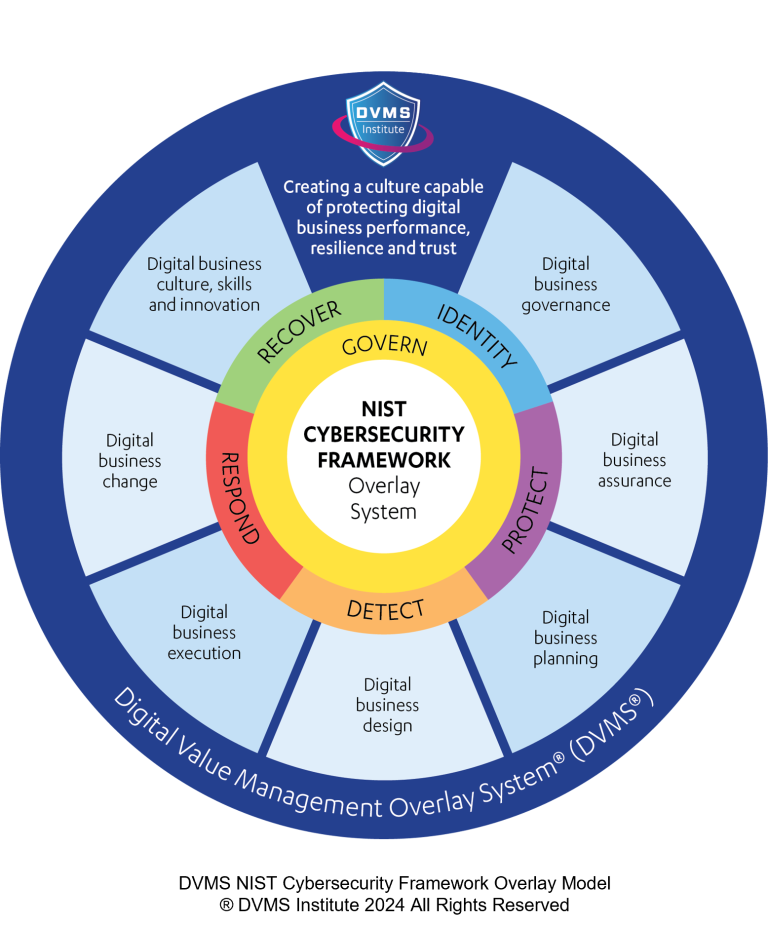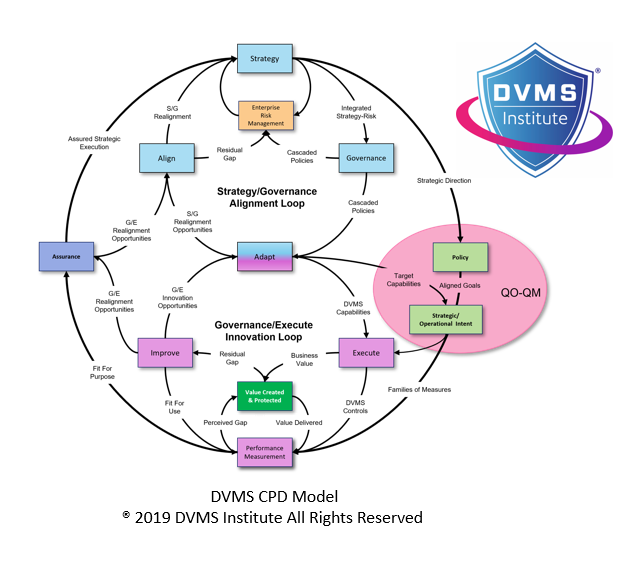Building a Digital Value Management System (DVMS)
Rick Lemieux – Co-Founder and Chief Product Officer of the DVMS Institute
A Digital Value Management System (DVMS) is a strategic framework designed to protect, enhance, and realize the full potential of an organization’s digital assets. Building a robust DVMS requires a holistic approach encompassing technology, people, and processes.
The foundational step is to define digital value. This is not merely about financial metrics; it encompasses customer experience, operational efficiency, innovation, and risk mitigation. Once this is established, a comprehensive inventory of digital assets, from data and software to intellectual property and customer relationships, must be created. This inventory serves as the bedrock for subsequent steps.
Risk assessment is paramount. Identifying potential threats and vulnerabilities is crucial for protecting digital value. A robust risk management framework should encompass threat intelligence, vulnerability assessment, and risk prioritization. This process is iterative and requires continuous monitoring and adaptation.
A deep understanding of digital performance is essential to optimizing value. Key performance indicators (KPIs) must be defined to measure the effectiveness of digital initiatives. These KPIs should align with overall business objectives and provide actionable insights. Advanced analytics and data visualization tools can be leveraged to uncover hidden patterns and opportunities.
Culture plays a pivotal role in the success of a DVMS. A data-driven, risk-aware culture must be fostered. Employees at all levels should have the knowledge and tools to protect digital assets and contribute to value creation. This requires ongoing training and awareness programs.
Technology is the enabler of a DVMS. Cybersecurity solutions, data management platforms, and automation tools are essential components. However, technology alone is insufficient. It must be integrated seamlessly into business processes and supported by appropriate governance structures.
Governance and compliance are indispensable elements of a DVMS. Clear roles and responsibilities must be defined, and accountability established. Regulatory requirements must be understood and adhered to. A governance framework should be in place to oversee the entire digital value management lifecycle.
Continuous improvement and innovation is essential. The digital landscape constantly evolves, necessitating regular assessment and adaptation of the DVMS. Feedback loops should be established to capture lessons learned and identify areas for enhancement.
Building a DVMS is a journey, not a destination. It requires sustained effort, collaboration across departments, and a long-term perspective. By investing in a robust DVMS, organizations can enhance their competitive advantage, mitigate risks, and unlock the full potential of their digital assets.
Ultimately, a successful DVMS is not merely a system but a strategic mindset. It is about viewing digital assets as a core business capability and managing them with the same rigor and attention as any other critical resource.
By aligning technology, people, and processes, organizations can build a DVMS that delivers tangible business value and ensures the long-term sustainability of their digital enterprise.
About the Author

Rick Lemieux
Co-Founder and Chief Product Officer of the DVMS Institute
The DVMS Institute teaches organizations of any size, scale, or complexity an affordable approach to mitigating cyber risk to protect digital business performance, resilience, and trust.
Rick has 40+ years of passion and experience creating solutions to give organizations a competitive edge in their service markets. In 2015, Rick was identified as one of the top five IT Entrepreneurs in the State of Rhode Island by the TECH 10 awards for developing innovative training and mentoring solutions for boards, senior executives, and operational stakeholders.
® DVMS Institute 2024 All Rights Reserved



